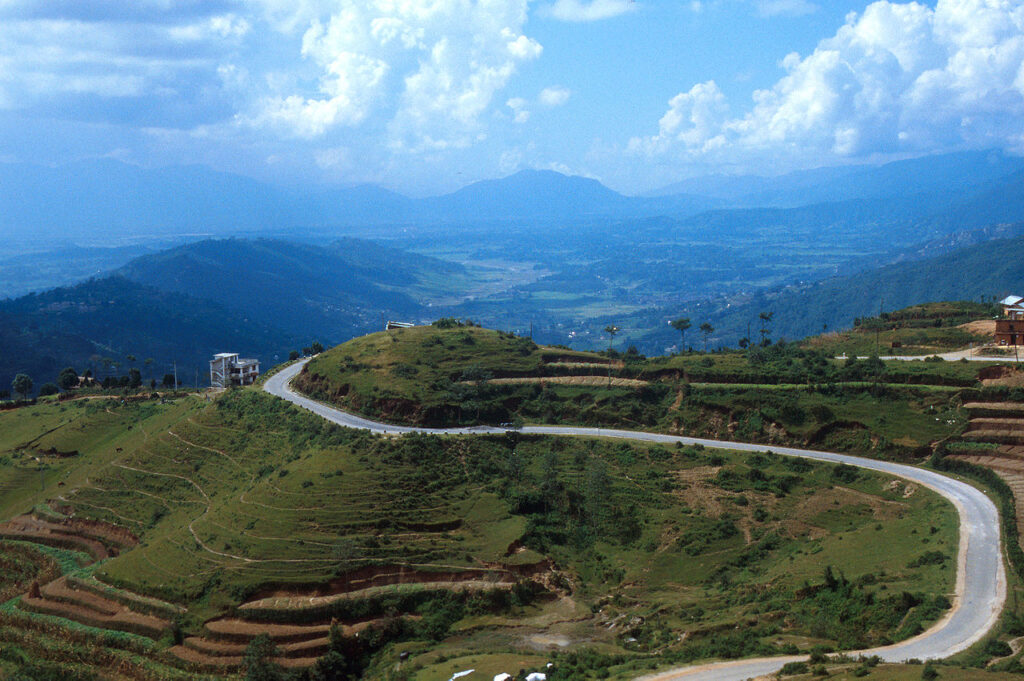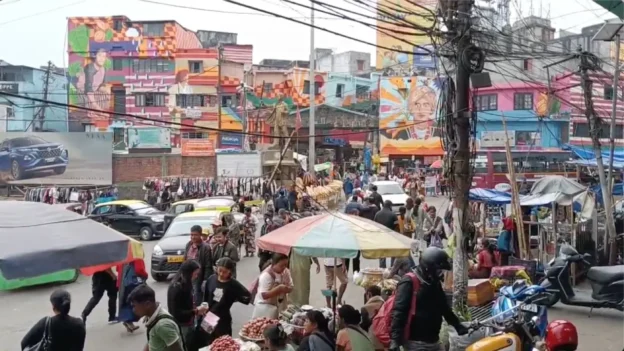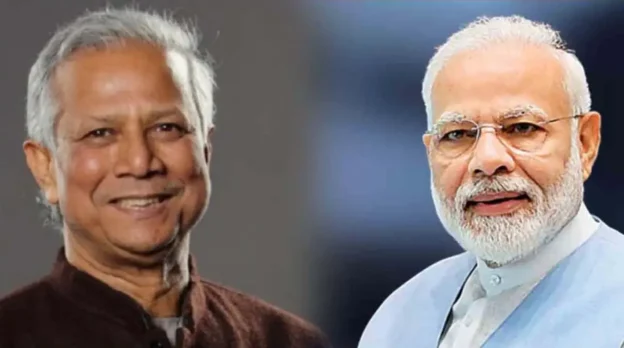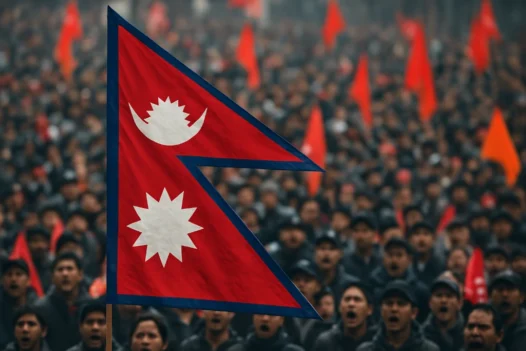Rediscovering Historical facts: How immemorial is “time immemorial…”
The phrase “Since time immemorial…” echoes through the corridors of Indian diplomacy and literature whenever Nepal is mentioned, serving as a solemn invocation. It symbolizes the deep-rooted ties between the two nations, steeped in history and culture. However, despite this perceived connection, Nepal has increasingly gravitated towards China, fostering a close relationship. Meanwhile, a significant portion of Nepalese society still harbours a palpable resentment towards “India”. This sentiment transcends mere disagreements in state policies or transient geopolitical manoeuvres; it delves into the Nepalese psyche, portraying India as a perpetual antagonist responsible for every political upheaval within their borders, which is often attributed to its intelligence agency, R&AW. This resentment perplexes Indian policymakers and media alike, as they struggle to comprehend why their “younger brother“ fails to acknowledge the enduring depth of their historical ties.
Yet, the pervasive distrust and resentment towards ‘India’ among Nepalese is notably absent when discussing places like Darjeeling, Shillong, Sikkim, Siliguri, Munglan, and others. These locales hold a distinct significance in the Nepalese consciousness, representing avenues for a fresh start and boundless opportunities for those disenfranchised in Nepal.
Across generations, these names have symbolized hope and promise, echoing in literature and everyday conversations. Here, it’s worth pausing; many readers, particularly those versed in International Relations, might balk at the ideas conveyed thus far and dismiss the paper as being philosophical or confined to the realm of social sciences. Unless laden with terms like ‘geo-strategy,’ ‘high-powered delegation,’ ‘Track 2,’ or references to Western intellectuals, or unless one can recount personal anecdotes involving diplomats or politicians, the discourse is seldom regarded as pertinent to International Relations or diplomacy at large. In my view, this represents a significant tragedy of contemporary diplomacy in our region – a tendency to seek validation through Western paradigms, ideas, and concepts when analyzing and managing Eastern relationships.
In the confines of this piece, we endeavour to explore the historical development and enduring presence of diverse locales within the central Himalayan region. Our aim is to decipher the evolution of ideas, concepts, and relationships from a region-centric standpoint. By delving into the origins and growth of various spaces, we seek to gain insights into the intricate tapestry of the Himalayan landscape. Ultimately, we posit the notion of a Nepali geography that extends beyond the confines of the nation-state. We contend that this broader understanding of Nepali geography holds transformative potential, particularly in reshaping India’s Nepal policy.
How deep-rooted are the Indo-Nepal relations when we scrutinize their historical trajectory? The notion of “time immemorial Indo-Nepal relations” often invoked, finds its concrete footing primarily in the 1950 Indo-Nepal Peace and Friendship treaty, when the term ‘Indo-Nepal’ was first used. If we try and push the timeline further back, then perhaps to India’s independence in 1947, when India as a independent modern state emerged, since it is only then that ‘India’ could adopt a formal independent foreign policy and foreign relations, in the way we understand them today, could be established. If we insist on going back even earlier, then perhaps to 1920s, when we encounter the formal adoption of the term ‘Nepal’ for the state (which until then called itself the Gorkha Rajya and Nepal throughout history only referred solely to the Kathmandu valley).
Extending beyond this, the late 18th and early 19th centuries which witnessed the emergence of the Gorkha state, laying the groundwork and the blueprint for Nepal as it emerged in the 20th century. As such, the notion of “time immemorial” Indo Nepal relations loses its substance, becoming a mere rhetorical flourish devoid of any historical accuracy. Indo –Nepal relations are barely 75 years old and even if one stretched the imagination and tried to incorporate the 18th and 19th century political formations as pre India and pre Nepal, even then it’s barely 230 year old relation. However, a closer examination of other spatial contexts within the region and the interconnectedness and shared spaces therein might lend credence to the notion of a more enduring perhaps even “immemorial” relations.
Given the constraints of space, delving into the myriad macro and micro spatalities along the modern Indo-Nepal border is beyond the scope of this discussion. Each border town possesses its own unique history, interrelations, landmarks, and collective memories. In these locales, the border and its associated regulations imposed by contemporary nation-states often serve as impediments rather than limitations to the imagination.
Therefore, our focus will be narrowed to two significant spatalities: the Khas socio-political formations and the emergence of Nepali Jati and subsequently Rashtra spaces. Examining the historical evolution of these formations provides valuable insights into the depth of relationships and how they are conceptualized and negotiated within the region. Furthermore, it lays the groundwork for advocating a supra-national Nepali landscape transcending conventional borders.
Exploring the Khas space requires a departure from the futile pursuit of the etymological roots of the term “Khas.” Instead, our focus shifts to the emergence of a socio-political entity in the 13th century that wielded authority over much of present-day western Nepal, portions of southern Tibet, and significant parts of contemporary Uttarakhand. Known as the Khas Malla empire, with its stronghold in Jumla, this entity stood as the pre–eminent state formation in the central Himalayan region until the ascent of the Gorkha empire nearly four centuries later. During this period, the development of the Khas language, society, and religion began, leaving an indelible mark on the region’s modern era. The empire’s territories can be broadly categorized into Jadan, encompassing regions beyond the Himalayas in the Tibetan plateau, and Khasan, comprising territories controlled by the empire centered in the Himalayan region. The evolution of religion during this time, characterized by the incorporation of Brahmanic deities into the Tibetan Buddhist pantheon and the broader Brahmanic influence on Buddhism, was shaped by the empire’s political imperatives. Many caste names prevalent in contemporary Nepalese Pahade society, such as Thapa, Adhikari, Karki, Ghimire, as well as references to Damai, Kami, and Sarki, trace their origins to this historical epoch. Additionally, the Khas language served as the precursor to three major languages of the central Himalayan region: Kumoani, Garhwali, and Nepali.
Following the collapse of this centralized socio-political structure, succeeding states emerged, shaping the socio-political landscape across Garhwal, Kumoan, and western Nepal. However, our narrative must shift focus to what is recognized today as western and central Nepal due to space limitations. Subsequent formations in this region underwent cycles of expansion and fragmentation, encroaching upon Magar and Gurung settlements. This process persisted until Gorkha, formerly a Magar settlement assimilated by the Khas state in the 16th century, rose to prominence, establishing another empire in the 18th and 19th centuries in the central Himalayan region.
The Gorkha empire epitomized the characteristics of an 18th-century Indian state, advocating for the Rajputizationof its ruling class and Brahminization of rituals, culminating in the codification of a strict hierarchical caste structure in Jung Bahadur Rana’s Mulki Ain of 1854. In an effort to sustain the lavish lifestyle of its ruling elite, the empire imposed normative agrarian practices on its subjects, perpetuating a vicious cycle of high land revenue demands, usurious money lending practices, and escalating indebtedness leading to increased slavery among the peasantry.
Transitioning to the genesis of the Nepali landscape, we observe the emergence of a new space catalyzed by the conditions engendered by the Gorkha empire in the 19th century. The empire’s policies rendered survival untenable for its peasantry, prompting many to seek refuge elsewhere. Concurrently, in northern India, the British administration began embracing certain notions of ethnographic and geographic determinism. These ideas posited that less Brahmanized communities made superior soldiers, highland dwellers were robust warriors, and only select communities from the eastern regions possessed the requisite traits for military service. These principles, later crystallized into the martial race theory, became pivotal in shaping the ideal composition of the burgeoning military labor market.
The fleeing peasants from the Gorkha empire, collectively labeledas “Gorkhas” by the British, underwent a series of transformations in identity and societal perception before assuming the moniker of “bravest of the brave.” Consequently, by the early 19th century, a scenario emerged wherein these displaced peasants, designated as Gorkhas, were not only employed to safeguard strategic regions like the Northeast frontier but also tasked with establishing settlements therein. It is within this milieu that locales such as Darjeeling, Sikkim, Assam, and Shillong entered the lexicon and collective imagination as symbols of emancipation and opportunity for the indebted and destitute peasants of the Gorkha empire.
Amidst the feudal and agrarian landscape of the Gorkhaempire, communities and castes resided in relatively isolated enclaves. However, the advent of factories and the cramped quarters of tea garden coolie lines and army barracks forced these communities into close proximity, engendering new social and cultural dynamics that facilitated the conception of a new community. This transformation found expression in Darjeeling with the emergence of a proto-middle class that spearheaded the Bhasa Andolan and articulated the concept of a Nepali Jati in the early 20th century. Intriguingly, the idea of the Nepali nation was conceptualized and articulated in Darjeeling rather than within the confines of the Gorkha empire, which adopted the name Nepal after 1920. The envisioning and articulation of the Nepali Jati in Darjeeling were smade possible by the proximity and influence of the Bengali national movement, an influence acknowledged even by leaders of the Bhasa Andolan such as Parasmani Pradhan. Surya Bikram Gyawali, upon his arrival from Banaras after visits to Nepal, marveled at the flourishing Nepali nation he witnessed in Darjeeling. It’s noteworthy that the earlier Khaslanguage, known until the 19th century as Khas Kura or Pahade Kura/Paschime Kura, was rechristened as Gorkhali by Jung Bahadur Rana in an attempt to elevate its status.
In Darjeeling, however, in the late 19th century, Father Turnbull first referred to this language as Nepali. Subsequently, inspired by the linguistic nationalism of Bengal and propelled by the emergence of a proto-middle class, a movement for the recognition of the Nepali language, known as the BhasaAndolan, gained momentum. This movement, beyond advocating for language recognition, also championed the idea of a Nepali nation—the Nepali Jati—recognizing that language, in the era of nations, necessitates a unifying force. Consequently, the narrative of the nation required a saga of origins, decline, and resurgence, complete with heroes. In Darjeeling, this narrative was crafted through the Bir Itihastradition, wherein heroes such as Prithvinarayan Shah and Bhanu Bhakta Acharya were exalted to embody the aspirations of the burgeoning nation.
The Fabric of Unity: Caste, Language, and Temporal Consciousness in the Nepali Landscape
What unifies the diverse expanse of the Nepali landscape? Despite the divergence and apparent separation of paths in post-colonial South Asia, I contend that the Nepali populace still constitutes a single supra-national community, occupying what I term the Nepali Landscape. This landscape encompasses Nepal and regions predominantly inhabited by Nepali speakers, including Sikkim, Darjeeling, Dehradun, and extensive areas of Northeast India. It represents a contiguous space bound together by caste dynamics (both hierarchical and horizontal), language, and a shared temporal consciousness.
While language is often considered the primary bond of this space, I argue that caste holds greater significance as the principal connector. Regardless of their location within the Nepali landscape, individuals retain their caste identity, subject to certain rituals of discrimination. Even if a person is from India, their national identity often takes a backseat to their caste identity when interacting in Kathmandu. Marital alliances are often sought within horizontal caste networks, emphasizing caste over national affiliations. Language, however, remains another vital factor in maintaining cohesion within the Nepali landscape. Historically, literature served as the medium connecting individuals across national borders. In the contemporary era, mediums like music videos, reels, movies, and numerous YouTube channels have assumed prominence in sustaining linguistic ties among Nepali speakers. Furthermore, time plays a crucial role in shaping the Nepali landscape, with the Nepali calendar serving as the temporal guide. It delineates dates for important festivals and seasons, fostering a shared temporal consciousness that contributes to the cohesiveness of this space.
In essence, the Nepali landscape transcends national boundaries, bound together by the intricate interplay of caste, language, and temporal consciousness, thereby constituting a distinct space-time continuum.
Utilizing the concept of the Nepali Landscape in foreign policy could revolutionize Indo-Nepal relations, transforming them from interactions between two separate nations to the management of a cohesive, continuous space. This approach would be unparalleled and impossible for China to replicate, as it lacks such deep-rooted historical connections with Nepal. The destruction of the Tibetan Landscape during the Cultural Revolution and China’s adherence to Western ideologies such as the notion of a People’s revolution and total infrastructural development further alienate it from the Nepali landscape.
While Nepal may harbour perpetual distrust of India on a national level, historical memories associated with spaces like Darjeeling, Sikkim, and Assam evoke entirely different sentiments. If one thinks of all this as utopian and philosophical, then I would like to end with an anecdote; once on the Indo Nepal border the Nepali Prime Minister and West Bengal chief Minister happened to be there at the same time, an Indian Nepali party worker of the Bengal Chief Minister who was also related to the Nepali Prime Minister travelled across the border met the Nepali prime Minister and facilitated an unofficial meet and greet with the West Bengal Chief Minister. This anecdote illustrates how informal interactions facilitated by shared cultural spaces can bypass bureaucratic hurdles inherent in formal diplomatic channels, emphasizing the need for Eastern solutions rooted in indigenous conceptions of relations and spatial understandings. In essence, reorienting Indian foreign policy through the lens of the Nepali Landscape offers a unique opportunity to forge deeper, more meaningful connections with Nepal, transcending traditional diplomatic paradigms and fostering a sense of shared identity and cooperation.







